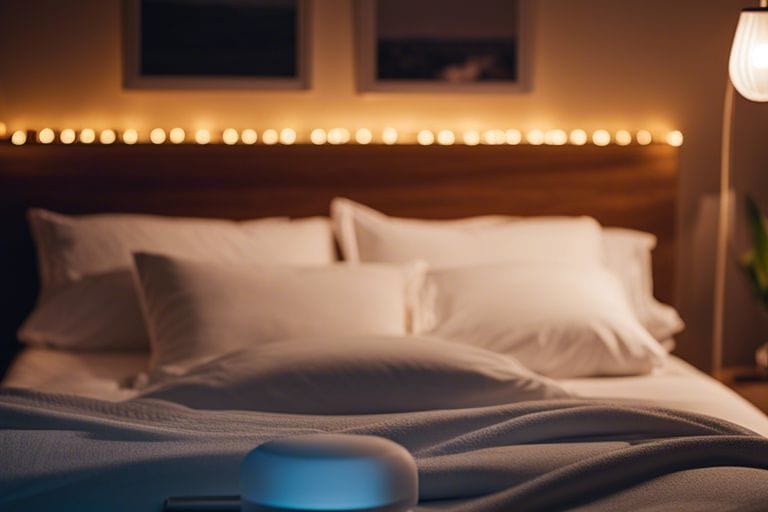Are Memory Foam Toppers Hot? Managing Temperature
Are you tired of waking up drenched in sweat from a hot memory foam topper? While memory foam toppers offer exceptional comfort and support, they can often trap heat, leaving you uncomfortably warm throughout the night. Managing the temperature of your memory foam topper is crucial for a good night’s sleep and overall comfort. In this post, we’ll explore the reasons why memory foam toppers can feel hot, as well as effective strategies for keeping your sleeping environment cool and comfortable. Whether it’s choosing the right bedding, adjusting your room temperature, or exploring cooling mattress topper options, we’ve got you covered. Say goodbye to sleepless, sweaty nights!
Key Takeaways:
- Memory foam toppers can retain heat: Memory foam is known for its ability to retain body heat, which can make some people feel too hot while sleeping.
- Consider toppers with cooling properties: Look for memory foam toppers that are infused with gel or have ventilation to help regulate temperature and keep you cooler at night.
- Adjust other bedding layers if necessary: If you find your memory foam topper too hot, consider using breathable sheets, lightweight blankets, and a lower tog duvet to help maintain a comfortable sleeping temperature.
Composition of Memory Foam Toppers
Obviously, understanding the composition of memory foam toppers is crucial in managing temperature. Memory foam is made of viscoelastic material, known for its ability to contour to your body’s shape and provide excellent support. It is a combination of polyurethane, additional chemicals for increasing density and viscosity, and other materials for support. To learn more about managing the temperature of your memory foam mattress, check out this article on How to Cool Down a Hot Memory Foam Mattress.
Material Properties
When it comes to material properties, memory foam toppers are known for their ability to respond to body heat and pressure, which makes them comfortable and supportive. However, this very quality can also make them retain heat, resulting in an uncomfortably warm sleeping surface. Some memory foam toppers are designed with cooling properties, such as gel-infusion or open-cell construction, to help dissipate heat and keep you cool throughout the night.
How Heat is Retained
The way heat is retained in memory foam toppers can be attributed to their density and the way they conform to your body. When your body heat warms the foam, it can become trapped within the material, creating a heat barrier between you and the topper. Additionally, if your room temperature is warm or if you are using heavy blankets, the heat retention can be exacerbated. Understanding the science behind heat retention in memory foam toppers can help you take proactive steps to manage the temperature for a better night’s sleep.

Factors Affecting Temperature in Memory Foam Toppers
Some factors can affect the temperature in memory foam toppers. These include:
- Thickness and Density of the Topper
- Room Temperature and Bedding
- Your sleeping position and body temperature
- The material of the mattress cover
Knowing these factors will help you manage the temperature of your memory foam topper more effectively.
Thickness and Density of the Topper
The thickness and density of your memory foam topper play a significant role in its temperature retention. Thicker and denser toppers tend to trap more heat, potentially making you feel warmer while you sleep. On the other hand, a thinner and less dense topper may allow for better airflow and temperature regulation.
Room Temperature and Bedding
Believe it or not, the room temperature and bedding you use can also impact how hot or cool you feel with a memory foam topper. If your bedroom tends to be warmer, you may want to opt for breathable and moisture-wicking bedding to help manage your body temperature. Additionally, using a cooling mattress pad or keeping the room at a cooler temperature can also help you stay comfortable while sleeping.
Cooling Technologies and Solutions
Not all memory foam toppers are hot. In fact, there are several cooling technologies and solutions available to help manage the temperature of your memory foam topper and ensure a comfortable night’s sleep.
Gel-Infused Memory Foam Toppers
One of the popular solutions for keeping memory foam toppers cool is the use of gel-infused memory foam. This type of topper is designed to draw heat away from your body, providing a cooling effect as you sleep. The gel-infused particles in the foam help to dissipate heat, preventing it from building up and causing discomfort. Additionally, the gel-infused memory foam topper can provide the added benefit of reducing pressure points and providing a more supportive sleep surface.
Additional Cooling Accessories
If you find that your memory foam topper is still retaining too much heat, there are additional cooling accessories you can consider. For example, a cooling mattress pad or topper can be placed on top of your memory foam topper to provide an extra layer of cooling comfort. Additionally, using breathable and moisture-wicking sheets and bedding can help improve airflow and reduce heat retention while you sleep.
Maintenance and Care Tips
For maintaining and caring for your memory foam topper, there are a few essential care tips that can help extend its lifespan and keep it at a comfortable temperature for you to sleep on. Here are some recommendations to keep in mind:
- Regularly rotate your memory foam topper to ensure even wear and tear.
- Use a waterproof cover to protect against spills and moisture.
- Keep your topper clean and dry to prevent the growth of mold and mildew.
Though memory foam toppers can retain heat, these care tips can help manage the temperature and maintain the overall quality of your topper for a better night’s sleep.
Proper Usage
When using your memory foam topper, it’s important to remember to rotate it regularly to ensure even wear and tear. Additionally, using a waterproof cover can help protect it from spills and moisture, thus extending its lifespan.
Cleaning and Ventilation
To keep your memory foam topper in optimal condition, it’s essential to clean and dry it regularly to prevent the growth of mold and mildew. Proper ventilation in the room can also help regulate the temperature of the topper, ensuring a more comfortable sleeping experience for you.

Are Memory Foam Toppers Hot? Managing Temperature
Following this overview of memory foam toppers and temperature regulation, you now have a better understanding of the factors that can contribute to heat retention and ways to manage it. By choosing a memory foam topper with cooling properties, proper ventilation, and using breathable bedding, you can effectively minimize heat build-up and achieve a comfortable sleeping environment. Additionally, being mindful of the mattress and room temperature can further aid in regulating heat, ensuring that you have a restful and undisturbed night’s sleep.
FAQ
Q: Are memory foam toppers hot to sleep on?
A: Memory foam toppers can retain body heat, making them feel hot for some users. However, many memory foam toppers are now designed with cooling properties to manage temperature and provide a more comfortable sleep experience.
Q: How can I manage the temperature of a memory foam topper?
A: To manage the temperature of a memory foam topper, you can invest in a cooling mattress pad or topper specifically designed to regulate heat. Additionally, using breathable sheets and ensuring proper air circulation in the room can also help alleviate heat buildup.
Q: What are some features to look for in a memory foam topper to help with temperature control?
A: When choosing a memory foam topper, look for features such as gel-infused foam, open-cell construction, or phase-change material, which are all designed to enhance breathability and dissipate heat. Additionally, consider the thickness of the topper, as thicker toppers may retain more heat than thinner ones.
